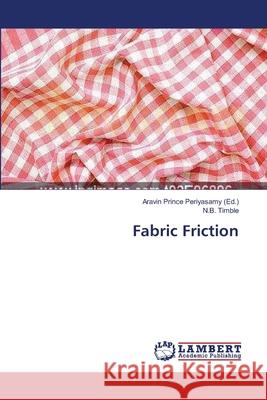Fabric Friction » książka
Fabric Friction
ISBN-13: 9783659540639 / Angielski / Miękka / 2014 / 72 str.
Fabric friction, which is defined as the resistance to motion, can be detected when a fabric is rubbed mechanically against itself or tactually between the finger and thumb. Friction is considered to be one property of cloth which has considerable importance in the fields of both technological and subjective assessment. Regarding the field of technology, friction is associated with the cutting of fabric multilayer and the separation of the fabrics in garment industries, and the friction of garments on other garments, upholstery and press covers. This monograph were include the primary objectives of determining what is known about the nature fabric friction, what are the various test methods employed in characterizing this property, what are the effects of various procedure and material factors on its value and, most importantly, what are the gaps that still exist in the scientific literature concerning this important physical property.
Fabric friction, which is defined as the resistance to motion, can be detected when a fabric is rubbed mechanically against itself or tactually between the finger and thumb. Friction is considered to be one property of cloth which has considerable importance in the fields of both technological and subjective assessment. Regarding the field of technology, friction is associated with the cutting of fabric multilayer and the separation of the fabrics in garment industries, and the friction of garments on other garments, upholstery and press covers. This monograph were include the primary objectives of determining what is known about the nature fabric friction, what are the various test methods employed in characterizing this property, what are the effects of various procedure and material factors on its value and, most importantly, what are the gaps that still exist in the scientific literature concerning this important physical property.











